Your cart is currently empty!
Tag: Systems
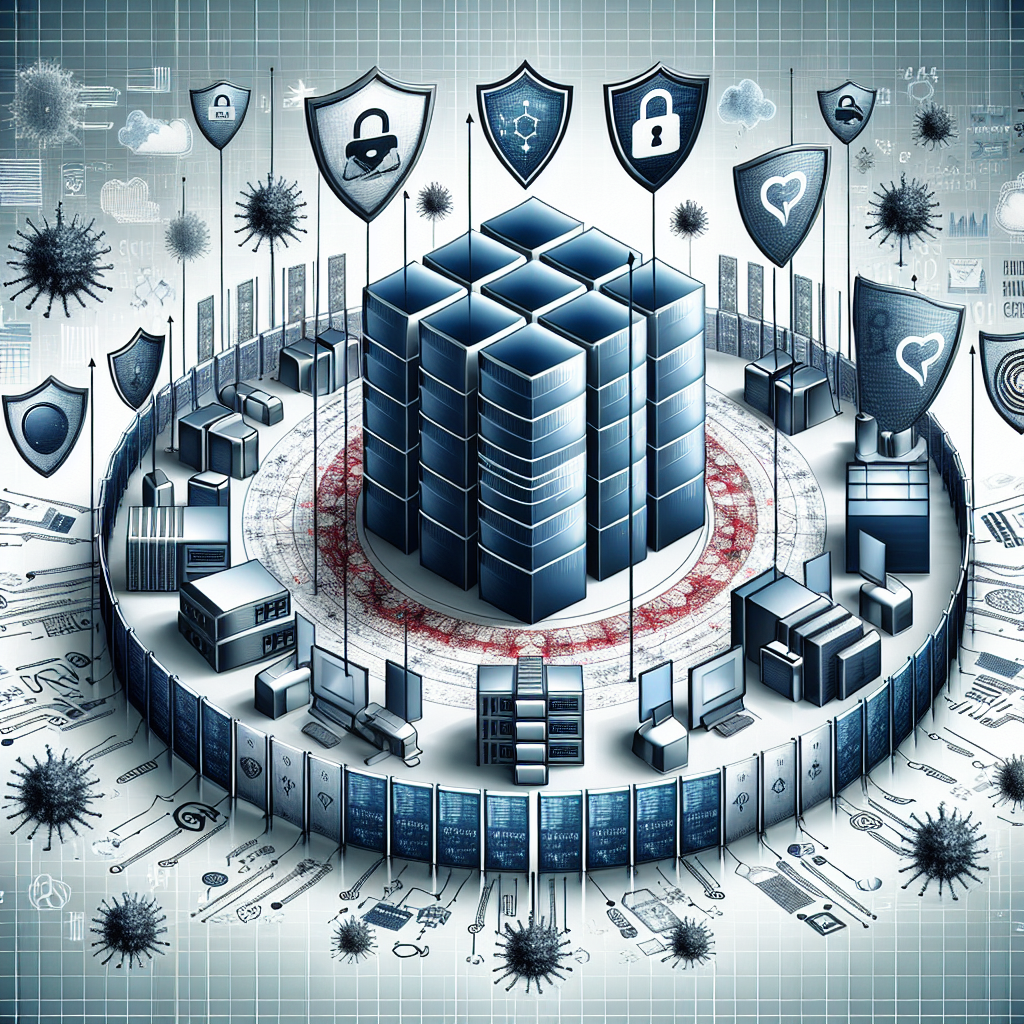
How Data Center Security Systems Protect Against Cyber Threats
Data centers play a crucial role in storing and managing vast amounts of data for businesses and organizations. With the increasing reliance on technology and data-driven operations, the security of data centers has become a top priority. One of the biggest threats facing data centers today is cyber attacks. Hackers are constantly looking for vulnerabilities to exploit and gain unauthorized access to sensitive information. To combat these threats, data centers employ robust security systems to protect against cyber attacks.Data center security systems are designed to protect the physical and virtual infrastructure of a data center from unauthorized access, data breaches, and other cyber threats. These systems include a combination of hardware and software solutions that work together to create multiple layers of defense against potential threats.
One of the key components of data center security systems is access control. This includes measures such as biometric authentication, key card access, and security guards to ensure that only authorized personnel can enter the data center facility. By restricting access to the physical infrastructure, data centers can prevent unauthorized individuals from tampering with servers and other critical equipment.
In addition to physical security measures, data centers also utilize advanced cybersecurity tools to protect against cyber threats. Firewalls, intrusion detection systems, and antivirus software are just a few of the technologies used to monitor and secure the network infrastructure. These tools help to detect and prevent malicious activity, such as malware infections, denial of service attacks, and unauthorized access attempts.
Data encryption is another important security measure used to protect sensitive data stored in data centers. By encrypting data at rest and in transit, data centers can ensure that even if unauthorized individuals gain access to the data, they will not be able to read or manipulate it without the proper decryption keys.
Regular security audits and penetration testing are also essential components of data center security systems. By regularly assessing the security posture of the data center and identifying potential vulnerabilities, data center operators can proactively address any weaknesses before they can be exploited by cyber attackers.
Overall, data center security systems are essential for protecting against cyber threats and ensuring the confidentiality, integrity, and availability of data stored in data centers. By implementing a combination of physical security measures, cybersecurity tools, data encryption, and regular security audits, data centers can minimize the risk of data breaches and maintain a secure environment for storing and managing critical information.
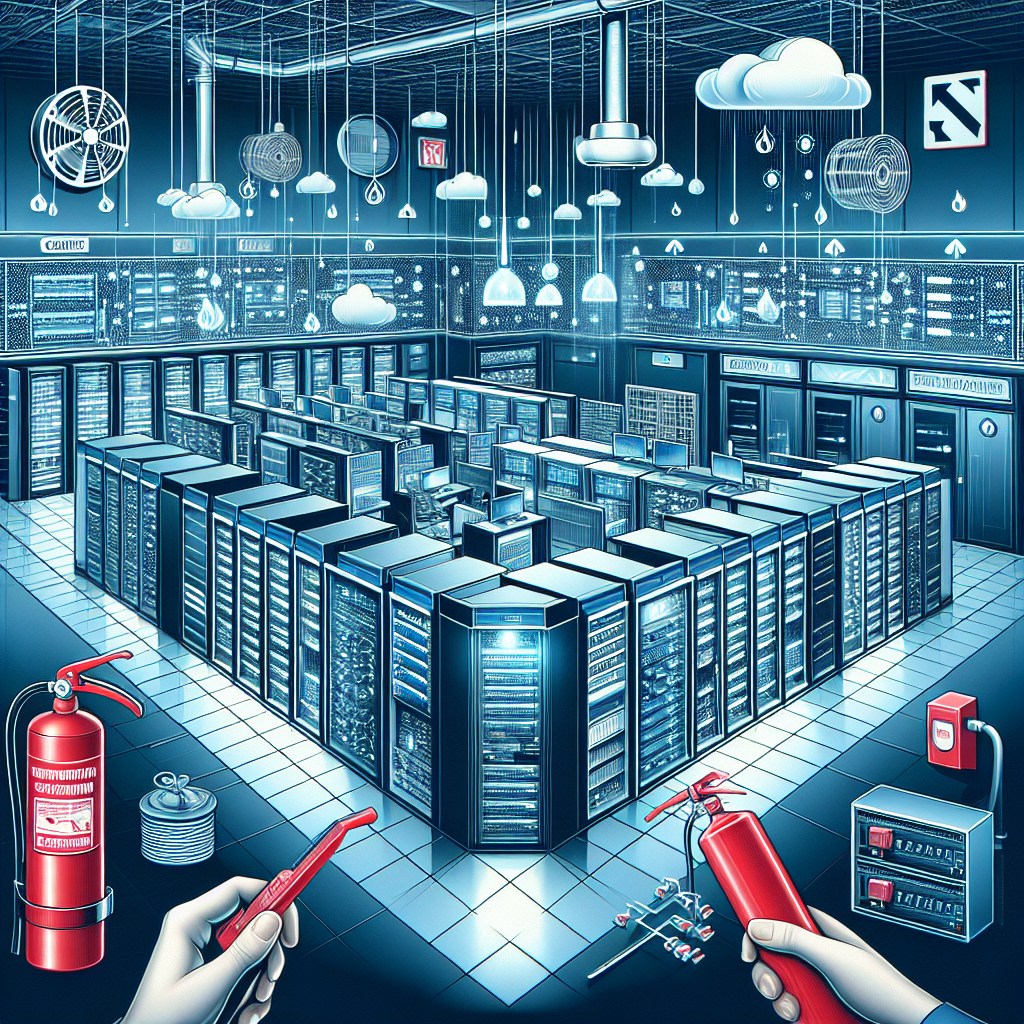
Best Practices for Implementing Fire Suppression Systems in Data Centers
Data centers play a crucial role in today’s digital world, hosting and managing vast amounts of sensitive information. With the ever-increasing demand for data storage and processing, it is essential to ensure the safety and security of these facilities. One of the most critical aspects of data center safety is fire suppression systems.Implementing an effective fire suppression system is vital to safeguarding data centers and preventing potential disasters. Here are some best practices for implementing fire suppression systems in data centers:
1. Conduct a thorough risk assessment: Before installing a fire suppression system, conduct a comprehensive risk assessment to identify potential fire hazards and determine the best approach to fire protection. Consider factors such as the size of the data center, the types of equipment and materials present, and the potential impact of a fire on operations.
2. Choose the right type of fire suppression system: There are several types of fire suppression systems available, including water-based systems, gas-based systems, and chemical-based systems. Each type has its advantages and limitations, so it is essential to select the system that best suits the specific needs of the data center.
3. Ensure compliance with regulations and standards: Data centers must comply with local fire codes and regulations, as well as industry standards for fire protection. Make sure that the chosen fire suppression system meets all relevant requirements and is installed and maintained according to the applicable standards.
4. Implement redundant systems: To enhance the reliability and effectiveness of the fire suppression system, consider implementing redundant systems. This includes having multiple suppression agents, backup power sources, and redundant control systems to ensure that the system operates smoothly in case of a failure.
5. Regularly test and maintain the system: Regular testing and maintenance are essential to ensure that the fire suppression system is functioning correctly and will operate as intended during a fire emergency. Conduct regular inspections, tests, and maintenance activities according to the manufacturer’s recommendations and industry best practices.
6. Train staff on fire safety procedures: Proper training is crucial for ensuring that data center staff are prepared to respond effectively in the event of a fire. Provide training on fire safety procedures, evacuation plans, and the operation of the fire suppression system to ensure that everyone knows what to do in case of an emergency.
In conclusion, implementing an effective fire suppression system is essential for safeguarding data centers and protecting valuable information. By following these best practices, data center operators can ensure that their facilities are well-equipped to prevent and respond to fire emergencies effectively. Remember, safety should always be a top priority when it comes to data center operations.
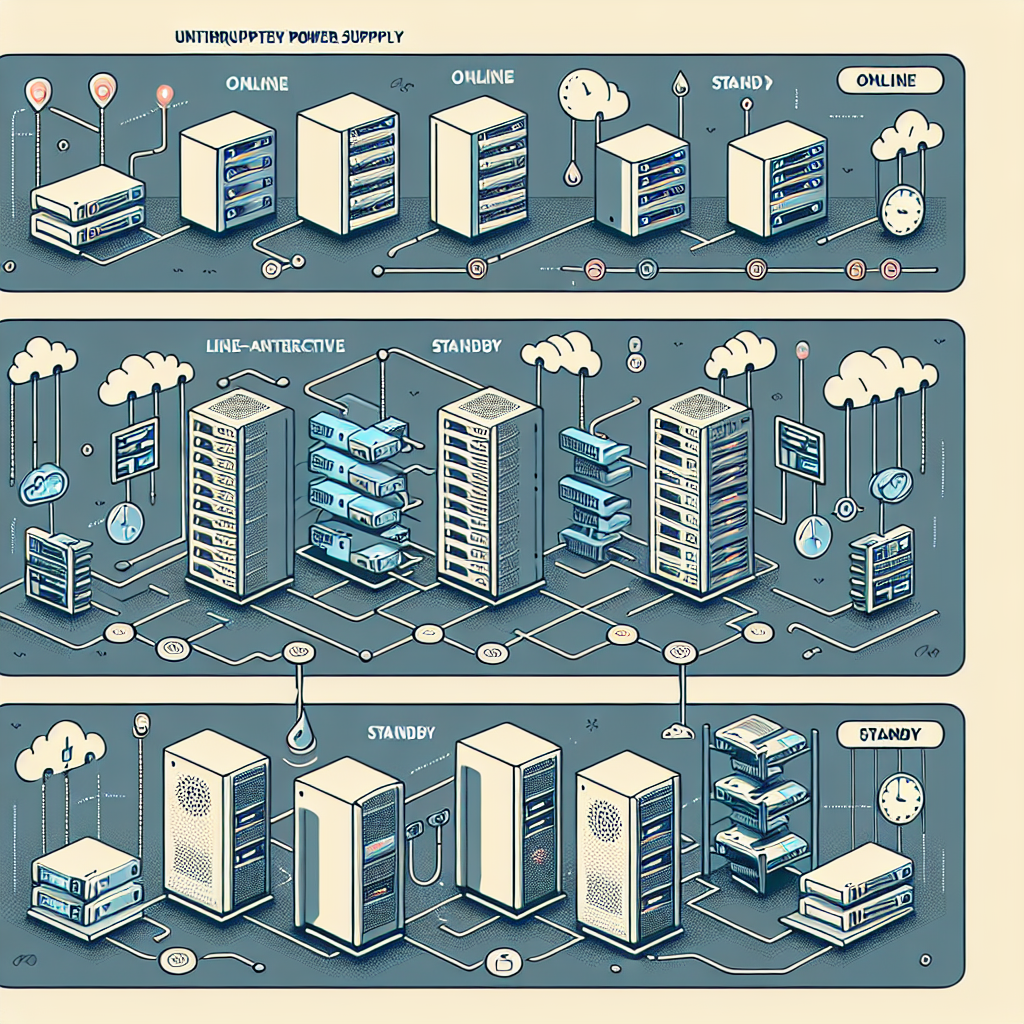
Understanding the Different Types of UPS Systems for Data Centers
Data centers are critical components of modern businesses, housing the servers and networking equipment that keep operations running smoothly. One essential piece of equipment for data centers is an uninterruptible power supply (UPS) system. UPS systems provide backup power in the event of a power outage or fluctuation, ensuring that data centers can continue to function without interruption.There are several different types of UPS systems available, each with its own strengths and weaknesses. Understanding the differences between these types can help data center operators choose the best system for their needs.
1. Standby UPS: Also known as offline UPS, this type of system switches to battery power only when the incoming power fails. While standby UPS systems are cost-effective and efficient for small loads, they can cause a brief interruption in power supply during the switchover.
2. Line-interactive UPS: Line-interactive UPS systems offer a higher level of protection than standby UPS systems by constantly monitoring the incoming power and adjusting voltage as needed. This type of UPS is ideal for data centers with sensitive equipment that requires consistent power supply.
3. Online UPS: Online UPS systems provide the highest level of protection for data centers, as they continuously supply power from the battery, even when the incoming power is stable. This type of UPS is recommended for mission-critical applications where downtime is not an option.
4. Double-conversion UPS: Double-conversion UPS systems operate similarly to online UPS systems but with the added benefit of converting incoming AC power to DC power and then back to AC power. This process ensures a clean and consistent power supply, making it ideal for data centers with sensitive equipment.
5. Modular UPS: Modular UPS systems consist of multiple UPS modules that work together to provide redundancy and scalability. This type of UPS allows data center operators to add or remove modules as needed, making it a flexible and cost-effective solution for growing businesses.
In conclusion, choosing the right UPS system for a data center is crucial to ensuring the continuous operation of critical equipment. By understanding the different types of UPS systems available and their unique features, data center operators can make an informed decision that meets their specific needs. Whether opting for a standby, line-interactive, online, double-conversion, or modular UPS system, investing in reliable backup power is essential for maintaining the uptime and reliability of a data center.
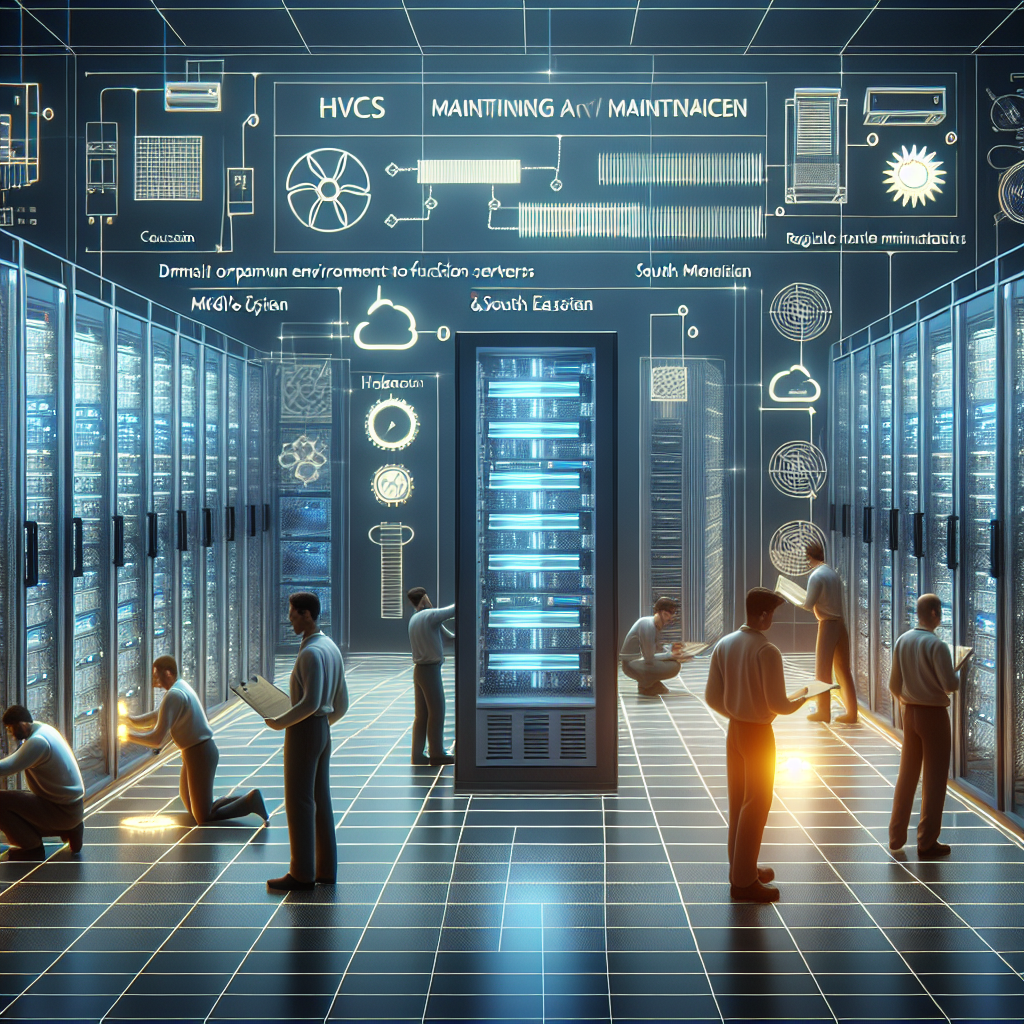
Best Practices for Maintaining Data Center HVAC Systems
Data centers are the backbone of modern businesses, housing critical infrastructure and storing massive amounts of data. To ensure that data center operations run smoothly, it is essential to maintain the HVAC (Heating, Ventilation, and Air Conditioning) systems that regulate temperature and humidity levels within the facility. Here are some best practices for maintaining data center HVAC systems:Regular Inspections and Maintenance: Regular inspections and maintenance of HVAC systems are crucial for ensuring optimal performance and preventing unexpected breakdowns. It is recommended to schedule routine inspections by qualified technicians to check for any issues, clean filters, and ensure that all components are functioning properly.
Monitor Environmental Conditions: Monitoring environmental conditions within the data center is essential for maintaining the efficiency of HVAC systems. Using environmental monitoring tools, such as temperature and humidity sensors, can help data center operators identify potential issues before they escalate into larger problems.
Proper Airflow Management: Proper airflow management is essential for maintaining optimal operating conditions within the data center. Ensuring that air is circulating effectively and efficiently can help prevent hot spots and maintain consistent temperature levels throughout the facility. Implementing hot aisle/cold aisle containment strategies can also help improve airflow and cooling efficiency.
Implement Energy-Efficient Practices: Energy efficiency is a key consideration for data center operators looking to reduce operating costs and minimize their environmental impact. Implementing energy-efficient practices, such as using variable speed drives, optimizing cooling schedules, and upgrading to energy-efficient HVAC equipment, can help reduce energy consumption and improve overall system performance.
Regular Filter Replacement: Dirty filters can restrict airflow and reduce the efficiency of HVAC systems. It is important to regularly replace filters in air handling units to ensure that air is circulating properly and that the system is operating at peak performance.
Invest in Remote Monitoring and Control: Remote monitoring and control systems allow data center operators to monitor the performance of HVAC systems in real-time and make adjustments as needed. This can help identify issues quickly and minimize downtime, as well as optimize energy usage and improve overall system efficiency.
By following these best practices for maintaining data center HVAC systems, operators can ensure that their facilities are operating at peak performance and that critical infrastructure remains protected. Regular inspections, proper airflow management, energy-efficient practices, and remote monitoring are all essential components of a comprehensive maintenance strategy for data center HVAC systems.
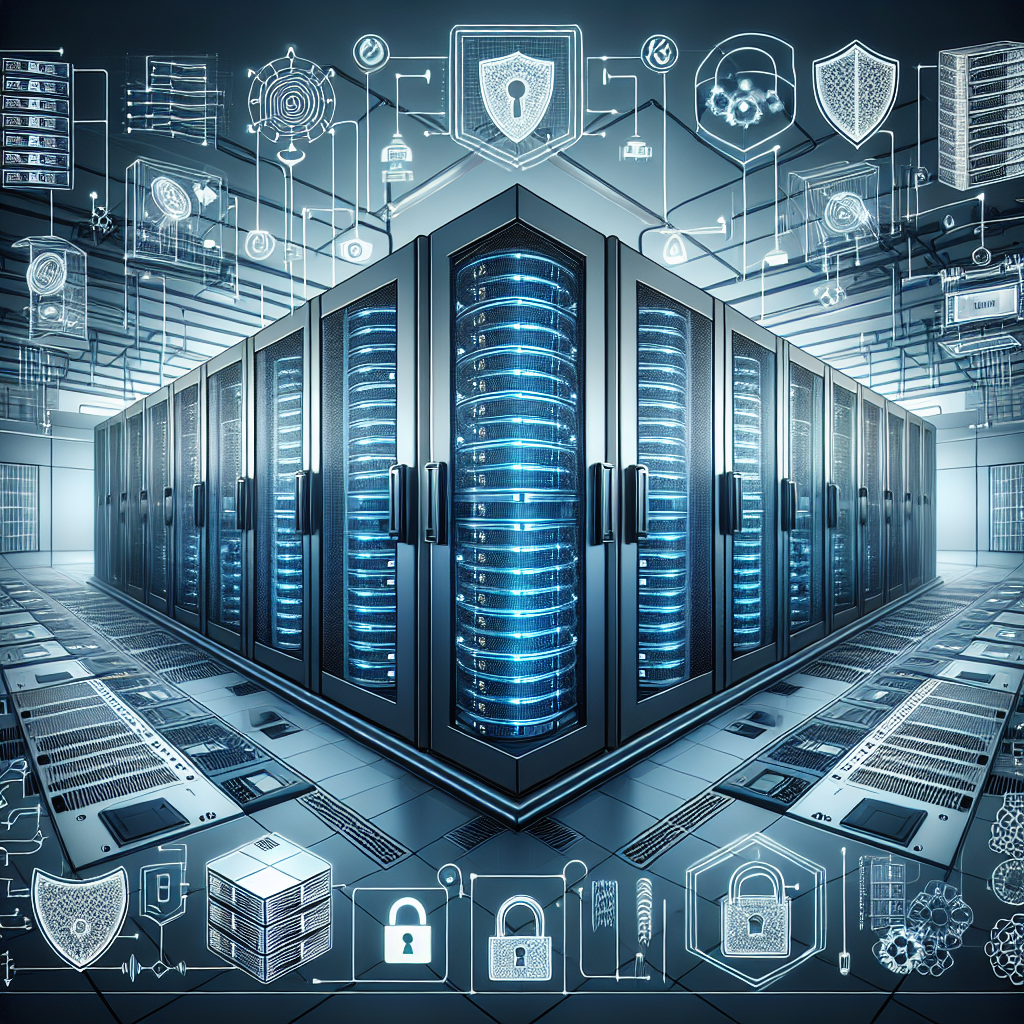
Emerging Trends in Data Center Security Systems
Data centers are critical infrastructure for organizations of all sizes, as they house and manage vast amounts of sensitive data. With the increasing frequency and complexity of cyber threats, it is more important than ever for data center operators to implement robust security measures to protect their assets.Emerging trends in data center security systems are constantly evolving to keep up with the ever-changing threat landscape. Here are some of the latest trends in data center security systems that organizations should be aware of:
1. Zero Trust Security Model: The zero trust security model is gaining popularity in data center security. This approach assumes that no user or device should be trusted by default, and access to resources is granted on a least-privilege basis. This helps prevent lateral movement of threats within the data center and minimizes the risk of insider threats.
2. Software-Defined Security: Software-defined security allows organizations to automate and orchestrate security policies within their data center environment. This helps improve visibility and control over security measures, and enables quicker response to security incidents.
3. Micro-Segmentation: Micro-segmentation involves dividing the data center network into smaller segments to limit the lateral movement of threats. This helps contain potential breaches and reduces the impact of a security incident on the entire data center infrastructure.
4. AI and Machine Learning: Artificial intelligence (AI) and machine learning are increasingly being used in data center security systems to detect and respond to threats in real-time. These technologies can help organizations identify patterns and anomalies in network traffic, and automate threat detection and response processes.
5. Encryption: Data encryption is a fundamental security measure that helps protect data in transit and at rest within the data center. Organizations should implement strong encryption protocols to safeguard their data from unauthorized access.
6. Cloud-Based Security Solutions: With the rise of cloud computing, organizations are turning to cloud-based security solutions to protect their data center infrastructure. These solutions offer scalability, flexibility, and cost-effectiveness, and can help organizations adapt to changing security needs.
7. Compliance and Regulatory Requirements: Data center operators must comply with various industry regulations and data protection laws. Emerging trends in data center security systems include solutions that help organizations meet compliance requirements and protect sensitive data from regulatory fines and penalties.
In conclusion, data center security is a complex and constantly evolving field. Organizations must stay informed about the latest trends in data center security systems to protect their assets from cyber threats. By implementing robust security measures, such as zero trust security, software-defined security, and encryption, organizations can safeguard their data center infrastructure and mitigate the risk of security breaches.
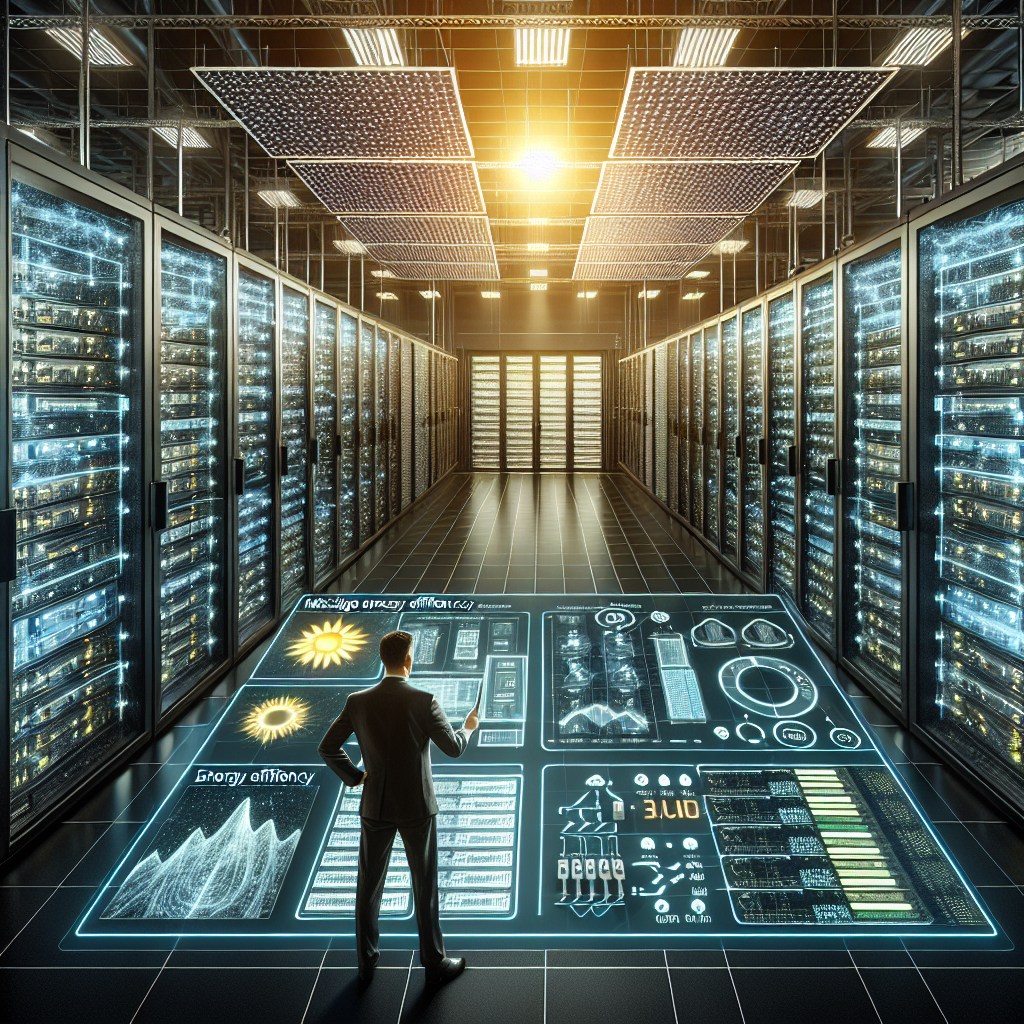
Maximizing Energy Efficiency in Data Center Electrical Systems
Data centers are the backbone of modern technology, housing the servers and equipment that power the internet and store massive amounts of data. With the increasing demand for digital services and the rise of cloud computing, data centers are consuming more energy than ever before. In fact, data centers now account for around 1% of global electricity consumption, and this figure is expected to continue growing.To address this issue, data center operators are looking for ways to maximize energy efficiency in their electrical systems. By reducing energy consumption, data centers can lower their operating costs, reduce their carbon footprint, and improve their overall sustainability. Here are some strategies for maximizing energy efficiency in data center electrical systems:
1. Implementing Energy-Efficient Cooling Systems: Cooling is one of the biggest energy consumers in data centers, as servers generate a significant amount of heat. By installing energy-efficient cooling systems, such as air-side economizers, water-side economizers, and containment systems, data centers can reduce their cooling energy consumption and improve their overall efficiency.
2. Virtualization: Virtualization technology allows multiple virtual servers to run on a single physical server, reducing the number of physical servers needed and therefore lowering energy consumption. By consolidating servers through virtualization, data centers can increase their energy efficiency and reduce their carbon footprint.
3. Utilizing Energy-Efficient Power Distribution Units (PDUs): Power distribution units are used to distribute power to servers and equipment in a data center. By using energy-efficient PDUs with features such as power monitoring, load balancing, and remote management capabilities, data centers can optimize their power distribution and improve their energy efficiency.
4. Implementing Energy-Efficient UPS Systems: Uninterruptible power supply (UPS) systems are essential for providing backup power in case of outages. By using energy-efficient UPS systems with high efficiency ratings, data centers can minimize energy losses and reduce their overall energy consumption.
5. Monitoring and Optimization: Regular monitoring of energy consumption and performance metrics is essential for identifying areas where energy efficiency can be improved. By analyzing data and optimizing systems accordingly, data centers can maximize their energy efficiency and reduce their environmental impact.
In conclusion, maximizing energy efficiency in data center electrical systems is essential for reducing energy consumption, lowering operating costs, and improving sustainability. By implementing energy-efficient cooling systems, virtualization, energy-efficient PDUs, UPS systems, and monitoring and optimization strategies, data centers can optimize their electrical systems and achieve significant energy savings. As the demand for digital services continues to grow, it is imperative for data centers to prioritize energy efficiency and sustainability in order to meet the challenges of the future.
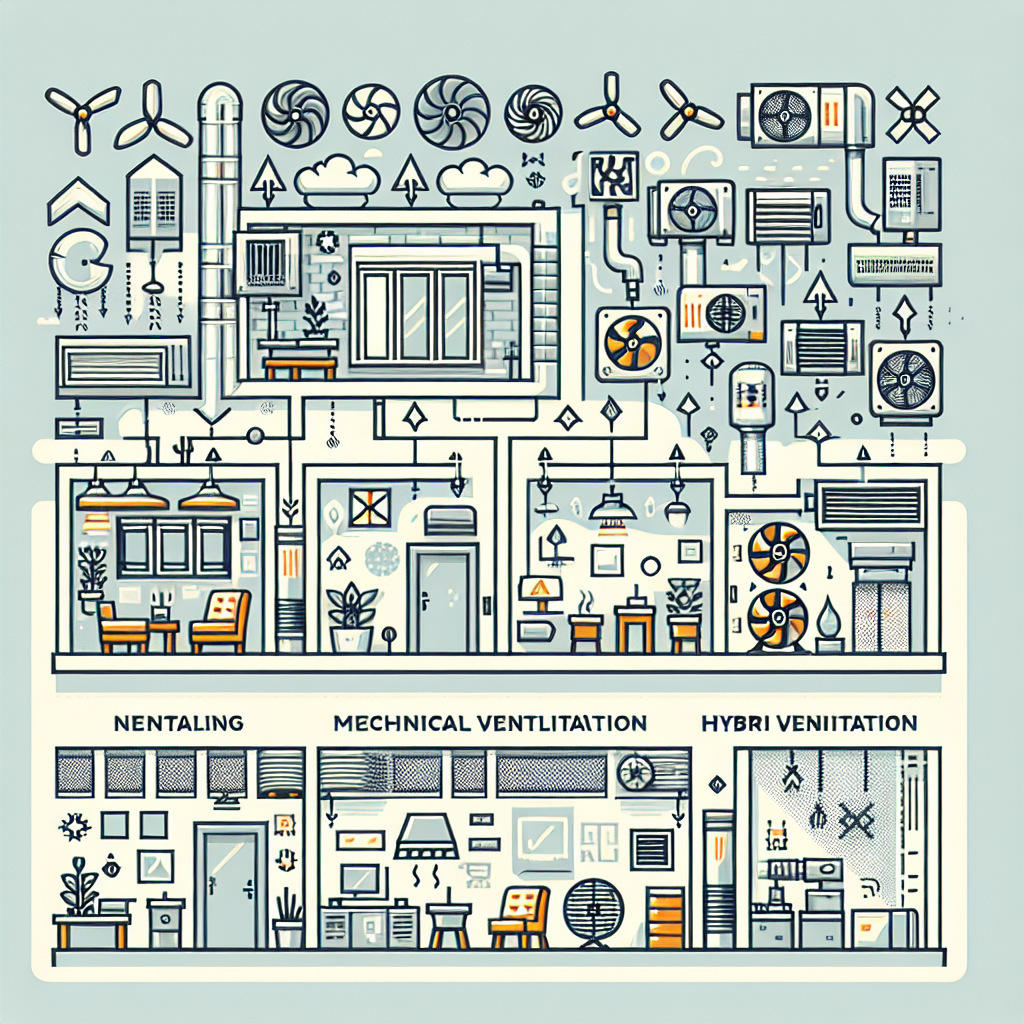
Understanding the Different Types of Ventilation Systems
Ventilation systems are an essential component of any building, whether it is a residential home, commercial building, or industrial facility. They help to maintain indoor air quality by providing fresh air and removing pollutants, odors, and excess moisture. There are several different types of ventilation systems, each with its own benefits and drawbacks. Understanding the differences between these systems can help you choose the right one for your specific needs.1. Natural ventilation
Natural ventilation relies on the flow of air through windows, doors, and other openings in a building to provide fresh air and remove indoor pollutants. This type of ventilation is the simplest and most cost-effective option, but it is not always reliable, especially in buildings with poor air circulation or in areas with high levels of outdoor pollution.
2. Mechanical ventilation
Mechanical ventilation systems use fans or blowers to circulate air throughout a building. There are several types of mechanical ventilation systems, including exhaust ventilation, supply ventilation, and balanced ventilation. Exhaust ventilation systems remove indoor air pollutants by exhausting stale air from the building, while supply ventilation systems bring fresh air into the building. Balanced ventilation systems combine both exhaust and supply ventilation to maintain a balanced airflow.
3. Heat recovery ventilation
Heat recovery ventilation systems are a type of mechanical ventilation system that recovers heat from outgoing air and uses it to preheat incoming air. This can help to reduce energy costs by maintaining a comfortable indoor temperature while also improving indoor air quality.
4. Energy recovery ventilation
Energy recovery ventilation systems are similar to heat recovery ventilation systems, but they also transfer moisture from outgoing air to incoming air. This can help to reduce humidity levels in the building, which can improve indoor air quality and prevent mold growth.
5. Natural ventilation with mechanical assistance
Some buildings use a combination of natural ventilation and mechanical ventilation to provide optimal indoor air quality. This type of system may include operable windows and doors, as well as fans or blowers to assist with air circulation.
In summary, there are several different types of ventilation systems available, each with its own advantages and disadvantages. It is important to choose the right ventilation system for your specific needs, taking into account factors such as building size, occupancy levels, and climate conditions. By understanding the differences between these systems, you can ensure that you have a ventilation system that provides a healthy and comfortable indoor environment.
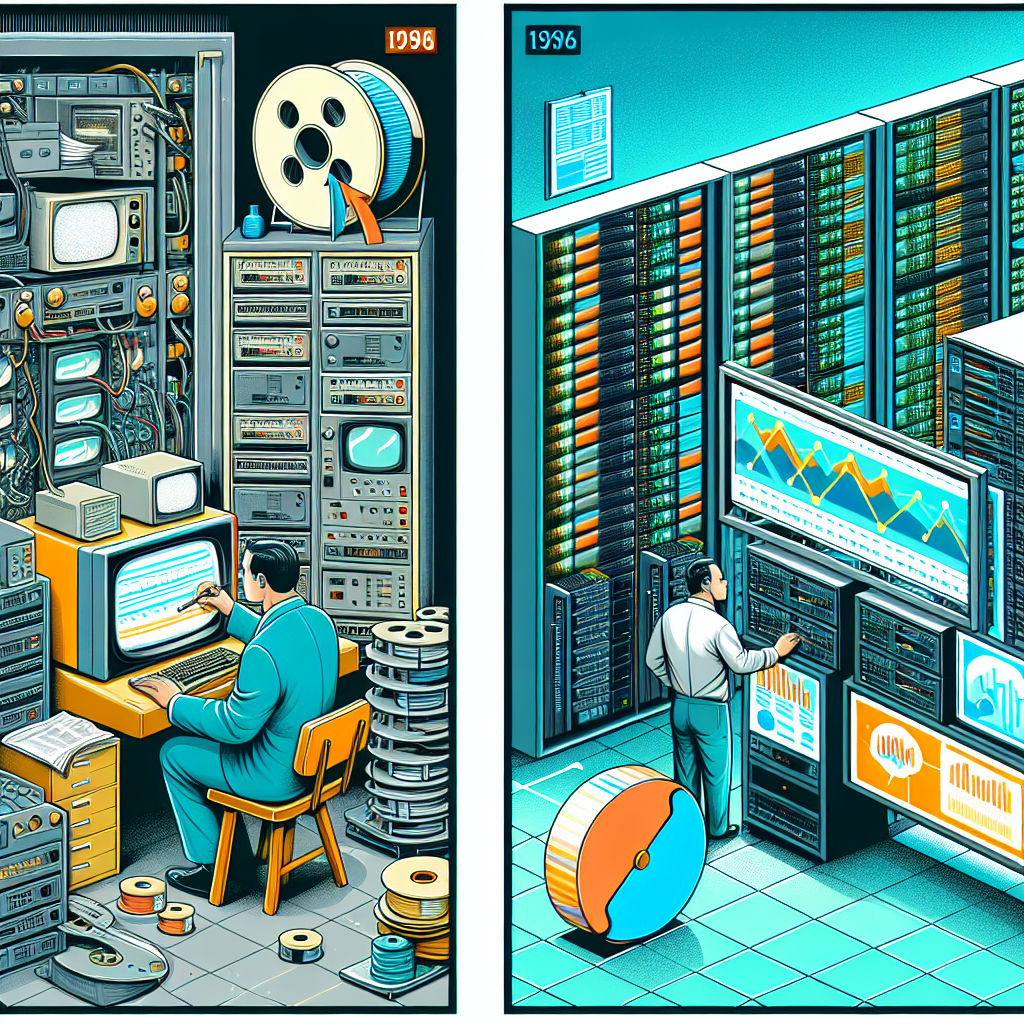
The Evolution of Data Center Monitoring: From Manual to Automated Systems
Data center monitoring has come a long way since the early days of manual checks and physical inspections. In today’s digital age, where data is the lifeblood of businesses, it is essential to have real-time visibility and control over the performance and health of data center infrastructure. This has led to the evolution of data center monitoring from manual to automated systems.In the past, data center monitoring was a labor-intensive process that required IT staff to physically inspect servers, networking equipment, and other hardware components to ensure they were functioning properly. This manual approach was not only time-consuming but also prone to human error, making it difficult to detect issues before they caused downtime or data loss.
As technology advanced, so did data center monitoring tools. Automated monitoring systems were developed to provide real-time insights into the performance and health of data center infrastructure. These systems use sensors, probes, and other monitoring devices to collect data on key performance metrics such as temperature, humidity, power usage, and network traffic.
Automated monitoring systems can analyze this data in real-time and alert IT staff to potential issues before they escalate into major problems. This proactive approach to monitoring allows data center operators to address issues quickly, minimizing downtime and ensuring the reliability of critical business operations.
In addition to real-time monitoring, automated systems also provide historical data analysis and trend forecasting capabilities. By analyzing historical data, data center operators can identify patterns and trends that may indicate potential issues in the future. This predictive analytics approach allows for proactive maintenance and capacity planning, helping data center operators optimize performance and reduce the risk of downtime.
Furthermore, automated monitoring systems can be integrated with other data center management tools, such as asset management and ticketing systems, to streamline operations and improve efficiency. This integration allows for a centralized view of data center operations, making it easier for IT staff to monitor and manage the entire infrastructure from a single dashboard.
Overall, the evolution of data center monitoring from manual to automated systems has revolutionized the way data center operations are managed. With real-time insights, predictive analytics, and integration capabilities, automated monitoring systems provide data center operators with the tools they need to ensure the reliability, performance, and security of their infrastructure in today’s fast-paced digital world.
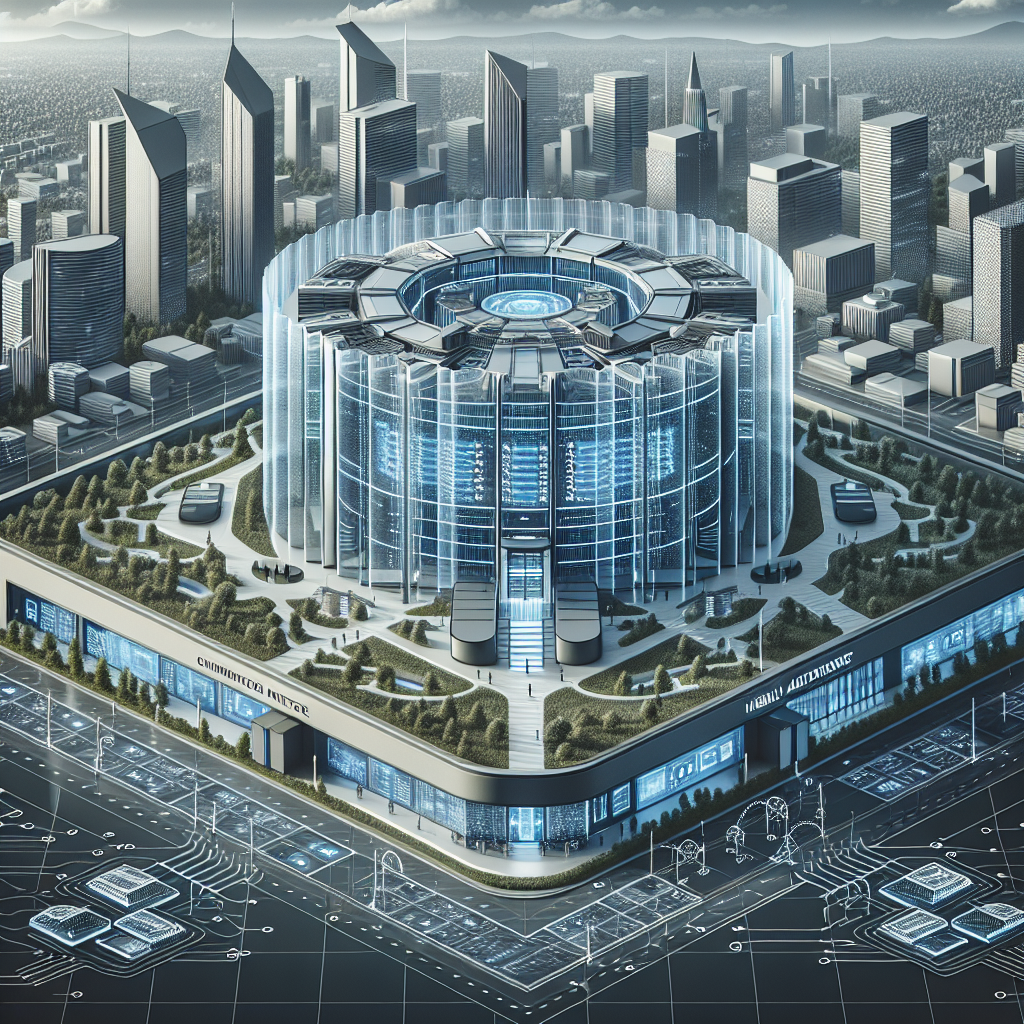
Best Practices for Implementing Data Center Security Systems
Data centers are a critical component of any organization’s IT infrastructure, housing the servers, storage, and networking equipment that support mission-critical applications and data. With the increasing threat of cyber attacks and data breaches, it is essential for organizations to implement robust security measures to protect their data center assets. In this article, we will discuss some best practices for implementing data center security systems.1. Physical Security Measures: The first line of defense for a data center is physical security. Access to the data center should be restricted to authorized personnel only, with strict access controls in place such as biometric scanners, keycard access, and security guards. Surveillance cameras should also be installed to monitor the facility 24/7.
2. Network Security: Data centers are vulnerable to cyber attacks through the network, so it is crucial to implement strong network security measures. This includes firewalls, intrusion detection and prevention systems, and encryption technologies to protect data in transit. Regular network scans and audits should be conducted to identify and address any vulnerabilities.
3. Data Encryption: Data encryption is essential for protecting sensitive information stored in the data center. All data should be encrypted both in transit and at rest to prevent unauthorized access. Strong encryption algorithms should be used, and encryption keys should be securely managed to prevent them from falling into the wrong hands.
4. Security Monitoring: Continuous monitoring of the data center environment is essential to detect and respond to security incidents in real-time. Security information and event management (SIEM) systems can help to aggregate and analyze security logs from various devices to identify potential threats. Security alerts should be promptly investigated and remediated to prevent data breaches.
5. Security Policies and Training: Employees play a crucial role in data center security, so it is essential to have clear security policies in place and provide regular training to staff. Employees should be educated on best practices for security, such as strong password management, phishing awareness, and proper handling of sensitive data.
6. Disaster Recovery and Business Continuity: In the event of a security breach or natural disaster, it is essential to have a disaster recovery plan in place to restore operations quickly. Regular backups of data should be performed and stored offsite, and a business continuity plan should be developed to ensure that critical operations can continue in the event of a disruption.
By following these best practices for implementing data center security systems, organizations can minimize the risk of data breaches and ensure the integrity and availability of their critical IT assets. Data center security is a continuous process that requires ongoing assessment and improvement to stay ahead of evolving threats in the digital landscape. By investing in robust security measures, organizations can protect their data center assets and safeguard their business operations.
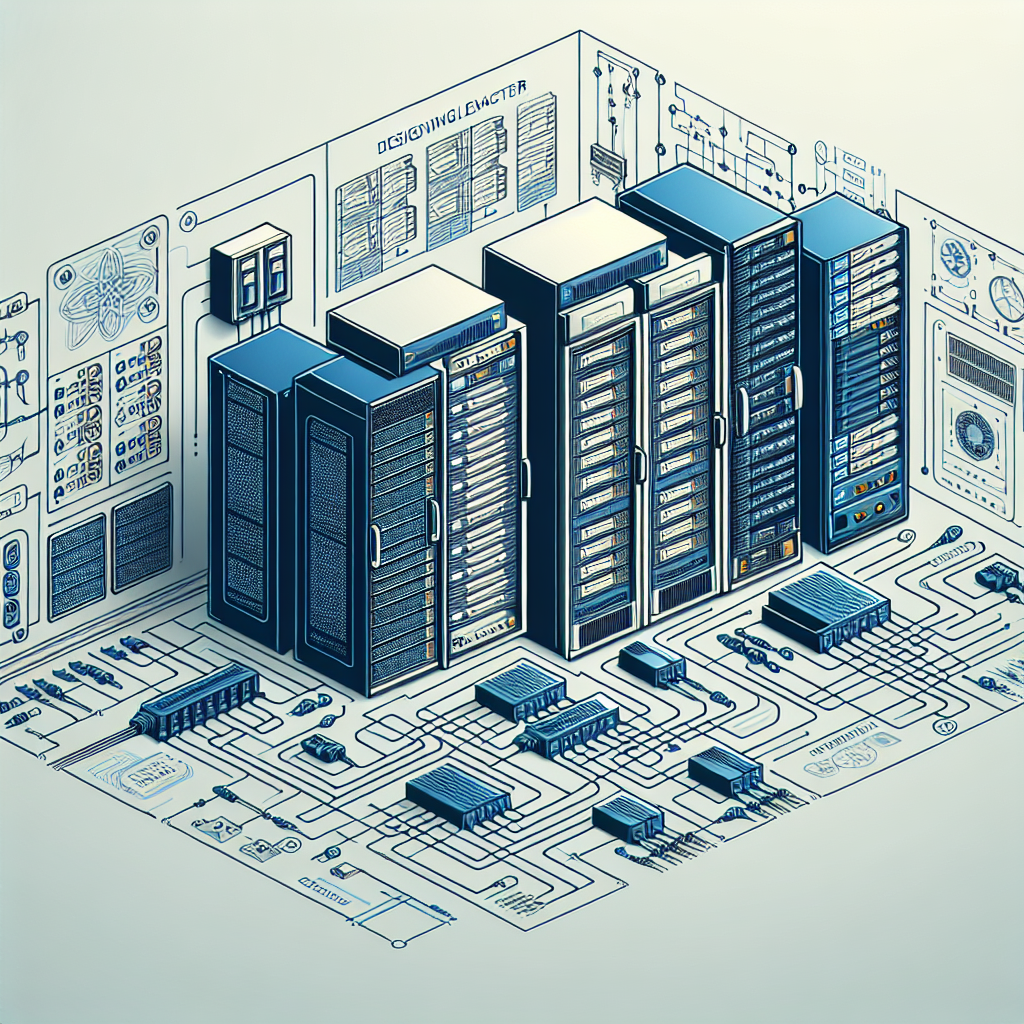
Key Considerations for Designing Data Center Electrical Systems
Designing a data center electrical system is a crucial part of building a reliable and efficient facility. There are several key considerations that need to be taken into account to ensure that the electrical system meets the needs of the data center. In this article, we will discuss some of the most important factors to consider when designing a data center electrical system.1. Capacity Planning:
One of the first things to consider when designing a data center electrical system is the capacity requirements of the facility. This includes determining the amount of power that will be needed to support the servers, cooling systems, and other equipment in the data center. It is important to plan for future growth in capacity to ensure that the electrical system can accommodate any additional equipment that may be added in the future.
2. Redundancy:
Redundancy is a critical aspect of data center design, especially when it comes to the electrical system. Redundant power sources, such as backup generators and uninterruptible power supplies (UPS), are essential to ensure that the data center remains operational in the event of a power outage. Redundancy should be built into every aspect of the electrical system, from the power source to the distribution system.
3. Scalability:
Scalability is another important consideration when designing a data center electrical system. The electrical system should be designed to be easily scalable so that additional capacity can be added as needed without requiring a complete overhaul of the system. This includes ensuring that there is enough space for additional equipment, as well as the ability to easily add new power sources and distribution equipment.
4. Energy Efficiency:
Energy efficiency is a key consideration in data center design, as these facilities can consume a significant amount of power. When designing the electrical system, it is important to consider energy-efficient technologies, such as high-efficiency UPS systems and cooling equipment. By reducing the energy consumption of the data center, not only can operating costs be lowered, but also the environmental impact of the facility can be minimized.
5. Safety and Compliance:
Safety is paramount when designing a data center electrical system. The system should be designed to meet all relevant safety standards and codes, including those related to electrical wiring, grounding, and fire protection. Compliance with these standards is essential to ensure the safety of personnel working in the data center and to prevent accidents or fires.
In conclusion, designing a data center electrical system requires careful planning and consideration of several key factors. By taking into account capacity planning, redundancy, scalability, energy efficiency, and safety and compliance, data center operators can ensure that their electrical systems are reliable, efficient, and safe. By investing in a well-designed electrical system, data center operators can minimize downtime, reduce operating costs, and ensure the reliability of their facilities.
